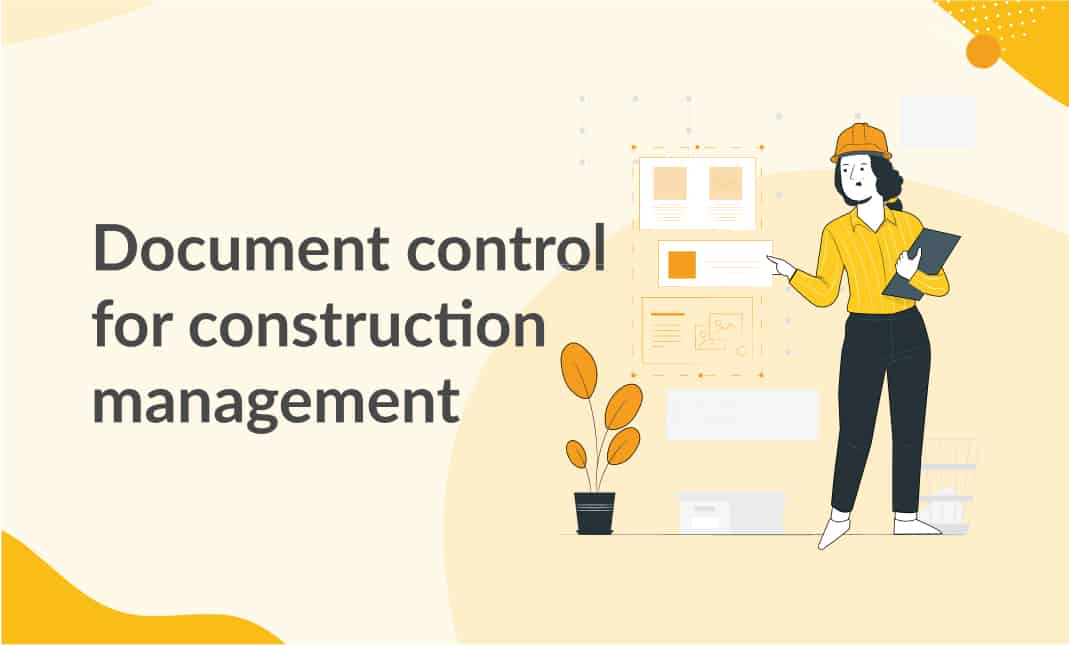Streamline Cooperation: The Power of Construction Document Management Solution
Streamline Cooperation: The Power of Construction Document Management Solution
Blog Article
Optimizing Job Cooperation: Architect's Finest Practices in Building And Construction Record Monitoring
In the complex realm of architectural projects, the efficient monitoring of building records stands as a cornerstone for success. Engineers, with their thorough focus to information and ingenious design options, are entrusted with managing a symphony of sources, timelines, and stakeholders. Nonetheless, in the middle of this complexity lies an important concern: just how can architects improve partnership processes to improve task end results? By checking out essential techniques such as leveraging cloud-based systems, developing durable interaction methods, and ensuring information safety and security, designers can elevate their document management techniques to brand-new elevations.
Leveraging Cloud-Based Platforms
Leveraging cloud-based systems is an essential technique for modern designers in optimizing building and construction file monitoring processes. By transitioning from traditional paper-based systems to cloud solutions, engineers can improve collaboration, improve document accessibility, and boost general project performance. Cloud-based platforms offer architects the ability to store, share, and upgrade building papers in real-time, ensuring that all staff member have access to one of the most current details no matter their place. This access advertises smooth interaction and control amongst task stakeholders, bring about less mistakes and hold-ups in the building and construction procedure.
Additionally, cloud-based platforms offer a protected atmosphere for storing delicate job information, providing encryption, normal backups, and individual permission settings to secure information stability. Architects can additionally benefit from the scalability of cloud services, allowing them to change storage capacity and performance based upon task requirements. Overall, leveraging cloud-based platforms encourages designers to maximize their construction document administration processes, driving greater collaboration, efficiency, and success in their tasks.
Executing Version Control Systems
Having established the advantages of cloud-based platforms in construction record administration, engineers can now boost their file control procedures by applying Variation Control Equipment. Version Control Equipment (VCS) are important devices that track adjustments in records, ensuring that employee are always dealing with the current and most exact details. By implementing VCS, architects can maintain a central repository where all job files are kept, allowing seamless cooperation while decreasing the risk of errors and version conflicts.
This feature is particularly important in building projects where style iterations and modifications are common. This transparency not just boosts liability but additionally helps in resolving conflicts or disparities that might develop during the job lifecycle.
Developing Interaction Procedures
To ensure efficient and effective project sychronisation, architects have to establish clear and durable communication methods within their building and construction document management processes. This system might be a project administration software program, e-mail threads, or cloud-based storage space options.
Furthermore, communication procedures must also include guidelines on how to take care of disputes, modification orders, and immediate problems that might occur throughout the job lifecycle. Establishing a structured technique to interaction guarantees that all stakeholders are on the same page, advertises openness, and eventually adds to the effective completion of the construction job.
Utilizing BIM Software for Sychronisation
BIM software plays a pivotal function in boosting control amongst task team participants in the construction market. Structure Details Modeling (BIM) helps with collaboration by supplying a central platform where architects, engineers, contractors, and various other stakeholders can interact in a collaborated manner. Through BIM software, task individuals can access and upgrade a common version which contains comprehensive information about the building design, building and construction elements, and project timetables.

Moreover, BIM software enables real-time partnership and interaction among staff member, despite their physical place. Through cloud-based BIM systems, project stakeholders can access the most up to date project information, track changes, and make informed choices quickly. Generally, leveraging BIM software for coordination boosts project efficiency, performance, and inevitably brings about effective job results.
Ensuring Information Safety and Compliance
In the world of building and construction paper administration, protecting information stability and guaranteeing regulative compliance are vital factors to consider for engineers and various other task stakeholders. Engineers should apply robust protection actions to safeguard delicate task information from unauthorized access or breaches.

Final Thought
Finally, designers can optimize project cooperation in building document monitoring by leveraging cloud-based platforms, carrying out variation control systems, establishing interaction protocols, using BIM software for sychronisation, and making sure information protection and compliance. These finest practices assist go to this site improve the construction process, enhance communication among task stakeholders, and boost efficiency in job shipment. By following these guidelines, engineers can efficiently take care of building documents and assist in effective task results.
Through BIM software application, project individuals can access and upgrade a shared model that includes comprehensive info regarding the building design, construction parts, and project timetables.
With cloud-based BIM platforms, task stakeholders can access the latest job details, track changes, and make educated decisions without delay - construction document management. Overall, leveraging BIM software for coordination boosts task performance, efficiency, and inevitably leads to effective job end results
In final thought, designers can enhance project collaboration in building document administration by leveraging cloud-based platforms, implementing variation control systems, establishing communication methods, using BIM software program for sychronisation, and making certain information safety and conformity. These best techniques assist streamline the building process, enhance communication among job stakeholders, and improve effectiveness in job distribution.
Report this page